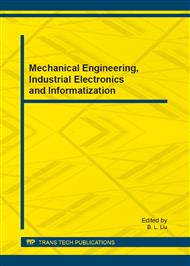[1]
Song Ziqi, Cheng Guojian, Yang Lilei, et al. A method for fine evaluation in extra-low permeability reservoirs using logging data[J]. Petroleum Geology Experiment and method, 2006, 28 ( 6): 595-599.
Google Scholar
[2]
Liu Ji yu. Advances in study on flow unit [J]. advance in Earth Sciences, 2000, 15 ( 3): 303-306.
Google Scholar
[3]
Aguilera R,Aguilera M S. The integration of capillary pressures and pickeit plots determination of how units and reservoir containers[J]. SPE Reservoir Evaluation Engineering, 2002, 5(6): 810-817.
DOI: 10.2118/81196-pa
Google Scholar
[4]
Zhao gold Province, some Xiaomiao, Chen Wanming, Classify and evaluate on the reservoir flow unit of chang 6 in the north hou city[J]. Henan science, 2010, 28 ( 7): 825-828.
Google Scholar
[5]
Yang Jingqiang, fan too bright, Ma Hongyu, et al. On log interpretation of water flooded layer with reservoir classification method[J]. well logging technology, 2010, 34 ( 3): 238-241.
Google Scholar
[6]
Xu Jie, Li Yinhua. The Dongpu sag deep gas reservoir classification standard and comprehensive evaluation of the reservoir [J]. Journal of Central South University ( NATURAL SCIENCE EDITION ) 2006, 37 ( Suppl ): 221-226.
Google Scholar
[7]
Guo Zhi, Sun Lianzhi, Zhang Xiaolei, et al. Quantitative classification and evaluation of the flow unit in chengdao oilfield[J]. Science & Technology Review, 2011, 29 ( 28): 62-67.
Google Scholar
[8]
Yin Taiju, Zhang Changmin, Wang Shouping, et al. Estimation of flow units in Pu-53 Block[J]. Acta petrolei Sinica, 2005, 26 ( 5): 85-89.
Google Scholar
[9]
Xiao Hongwei, Zhang Jia, deer Liqing, etc. Control on fracture of block D401 in xinzhan oilfield [J]. Daqing petroleum geology and development, 2006, 25 ( 4): 68-71.
Google Scholar
[10]
Zhang Weidong, Li Xiaofeng, Jia Guolong. Baibao oil field is long 3, 4 + 5 low permeability reservoir quantitative evaluation [J]. Science & Technology Review, 2008, 26 ( 21): 61-65.
Google Scholar
[11]
Lv Xiaoguang, Yan applied, Yang Gensuo. Classification method of petrophyscal facies and application [J]. Daqing petroleum geology and development, 1997, 16 ( 3): 18-21.
Google Scholar
[12]
Li Zhaoyong. Flow unit division of fuyang reservoir with low permeability in sanzhao depression [J]. fault block oil and gas field, 2011, 18 ( 1) : 66-69.
Google Scholar
[13]
Cai Min . The study of the interpretation criterion for low permeability and thin-poor watered out zones in longhupao oilfield [D]. Zhejiang University, (2010).
Google Scholar
[14]
Shi Chengen, solution of Wei, Sun Wei, et al. Quantitative division of flow units in panguliang chang 6 reservoir, Jing an oilfield [J]. oil and gas geology, 2006, 27 ( 2): 239-243.
Google Scholar
[15]
Irvan Rahmawan, Yusni Aditiah, Akbar Kurniawan, et al. Estimating Permeability in Uncored Wells Using Modified Flow Zone Index[A]. paper SPE 122490 first presented at the 2009SPE Asia Pacific oil and Gas Conference and Exhibition[C]. Jakarta, Indonesia, 4-6 August.
DOI: 10.2118/122490-ms
Google Scholar
[16]
Jin Yanxin, Lin Chengyan, Zhao Li, et al. Discussion on FZI methodology in flow unit identification and discrimination [J]. petroleum exploration and development, 2004, 31 ( 5): 130-132.
Google Scholar


